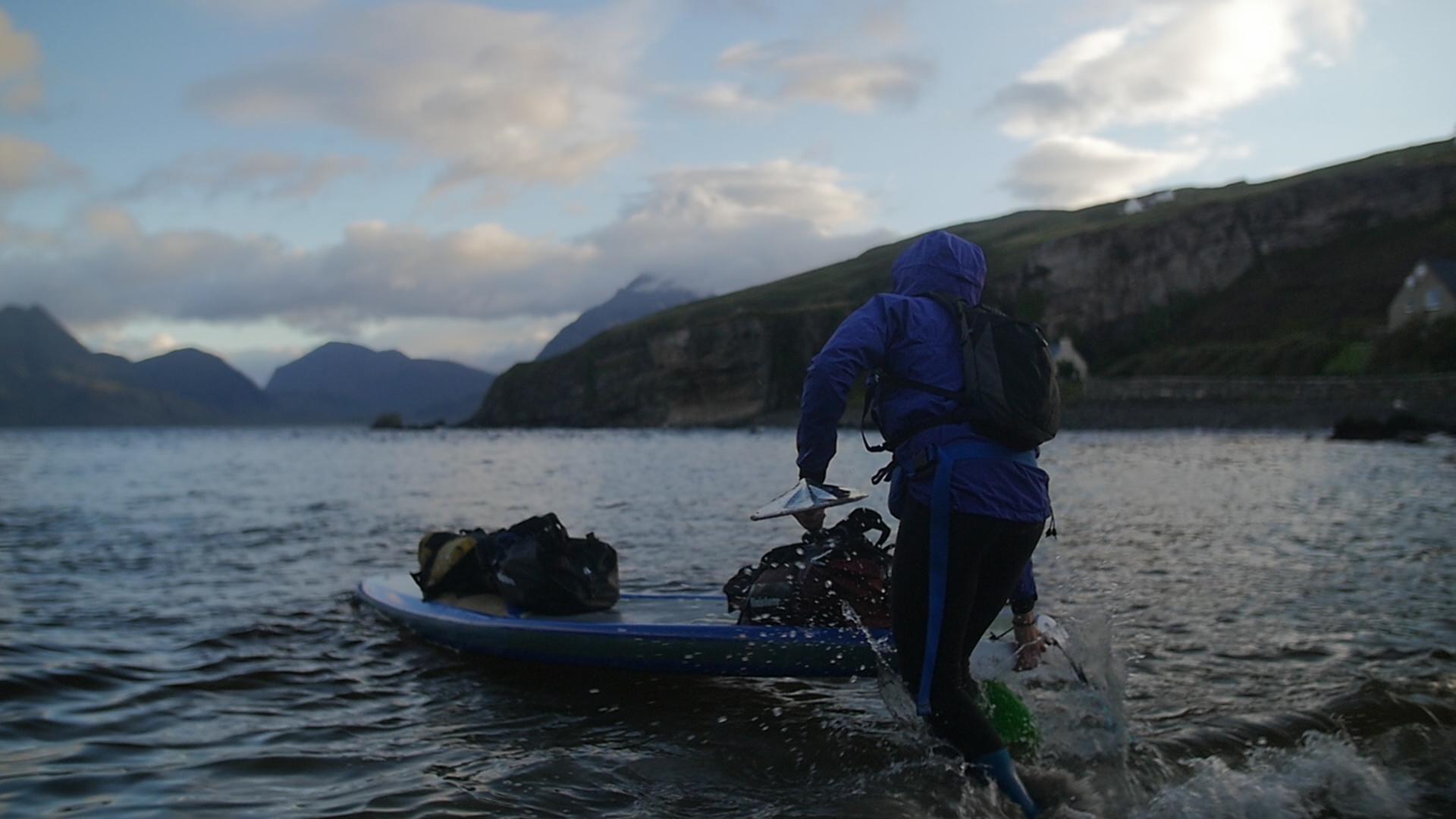Stand up paddleboarding is simple fun – you don’t need training to give it a go, and there are loads of really wonderful places you can explore using your SUP, inland and around the coast.
The sea is by far my favourite place to paddleboard. I love how the wind, tides and coastline make it interesting, and more challenging. But the sea can also be dangerous without good judgement, knowledge, and without the right equipment. It’s also not just your life at risk if someone has to come and rescue you.
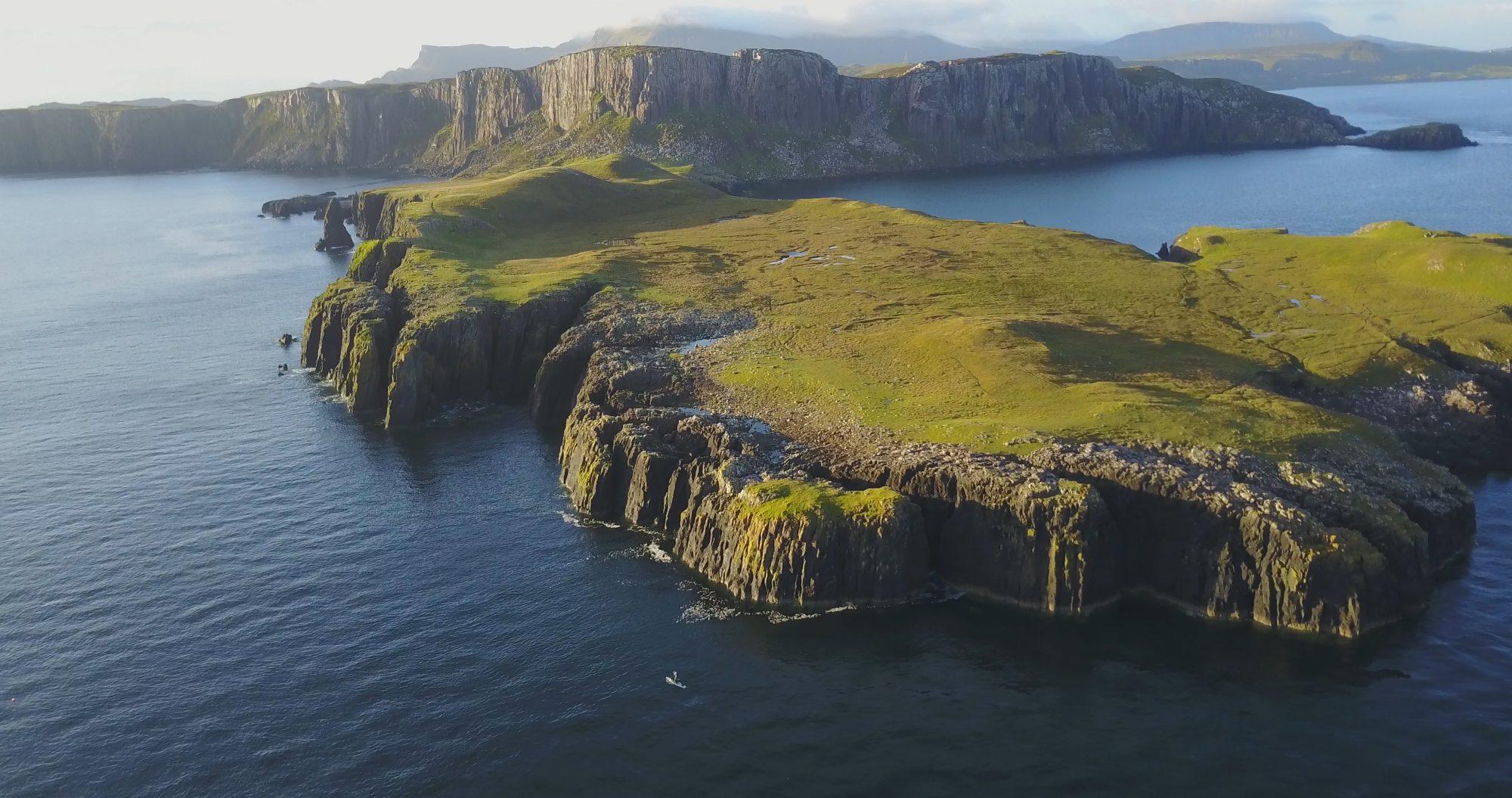
So here are my ten top tips to safe sea SUPing. Please drop us a comment on Instagram or Facebook with yours tips too!
1
Respect the ocean
On the sea you are vulnerable to the power of mother nature. Do not underestimate her. The gentlest offshore breeze can carry a stand up paddleboard out to sea. You may be strong, but you’ll never be stronger than some tidal races around headlands. Remaining humble is the first step to avoiding danger.
2
Wear the right kit
Not so relevant on a hot summer’s day, but even when the air temperature is warm, the sea can be absolutely freezing! Getting cold out at sea is bad news because once you’re cold it’s almost impossible to warm up again. If there’s a chance you might fall off, get yourself a good neoprene base layer. I love the longjohn for this, as you can layer it up. It’ll keep you warm if you fall in, but won’t restrict your movement the way a lot of traditional wetsuits might. In winter, I usually wear dry trousers and a windproof jacket. You’ll be surprised how much windier it is out to sea than on land, and after a while, it really cuts into you. I also recommend taking a hat and a neck scarf.
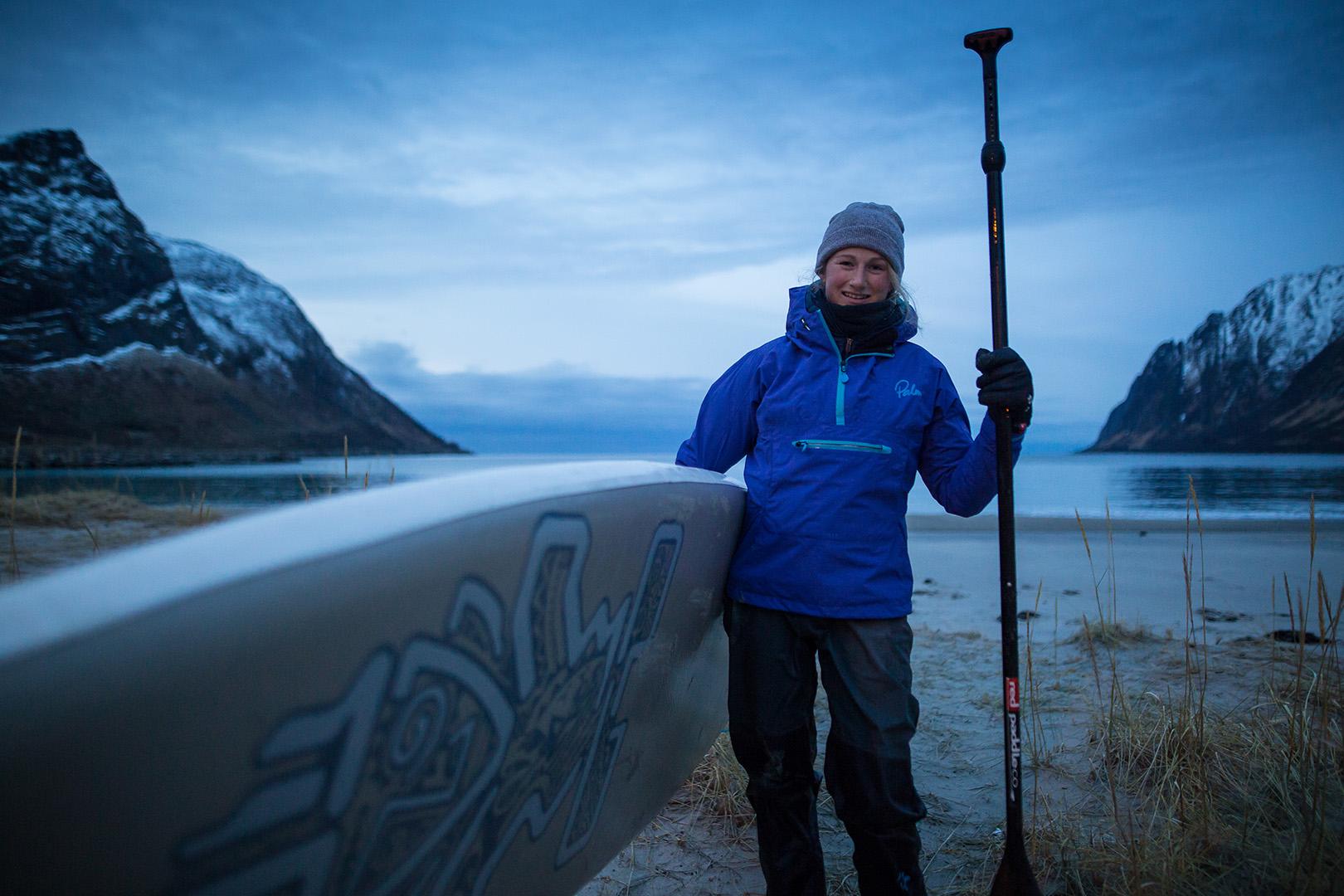
3
Safety equipment
A last resort and one you should not rely upon – staying out of danger in the first place should be your priority. At sea I always take with me a personal floatation device. Either an inflatable one like the Glide or a ready to go buoyancy aid, whichever you feel most comfortable in. Always wear a leash – I’m pretty sure swimming after a board wouldn’t be fun! I carry a personal locator beacon (PLB) too. They’re quite expensive, but worth it for the peace of mind it gives me. Should I be in real trouble I can activate the PLB, which sends a distress signal with my GPS location to the coastguard. I also carry a VHF radio and a mobile phone and charging pack in a waterproof bag for communication with land and other vessels. All of this stuff should be on your person, not at the bottom of a bag strapped to your board. Optional extras are inshore flares and a towrope – I carry these bulkier items in my main bag on the board.
4
Know your tides
A bit daunting and complicated at first, but it’s really important to have an idea of what the tides are doing. There might be strange things that the tides in a particular area do, and getting some local knowledge on this can be invaluable. I use an app called Navionics, without which I don’t know how I would have got up to John o’ Groats! Find someone who understands tides and ask them to give you a tutorial. It might take a while to completely understand, but it’s a pretty cool feeling when the penny drops.
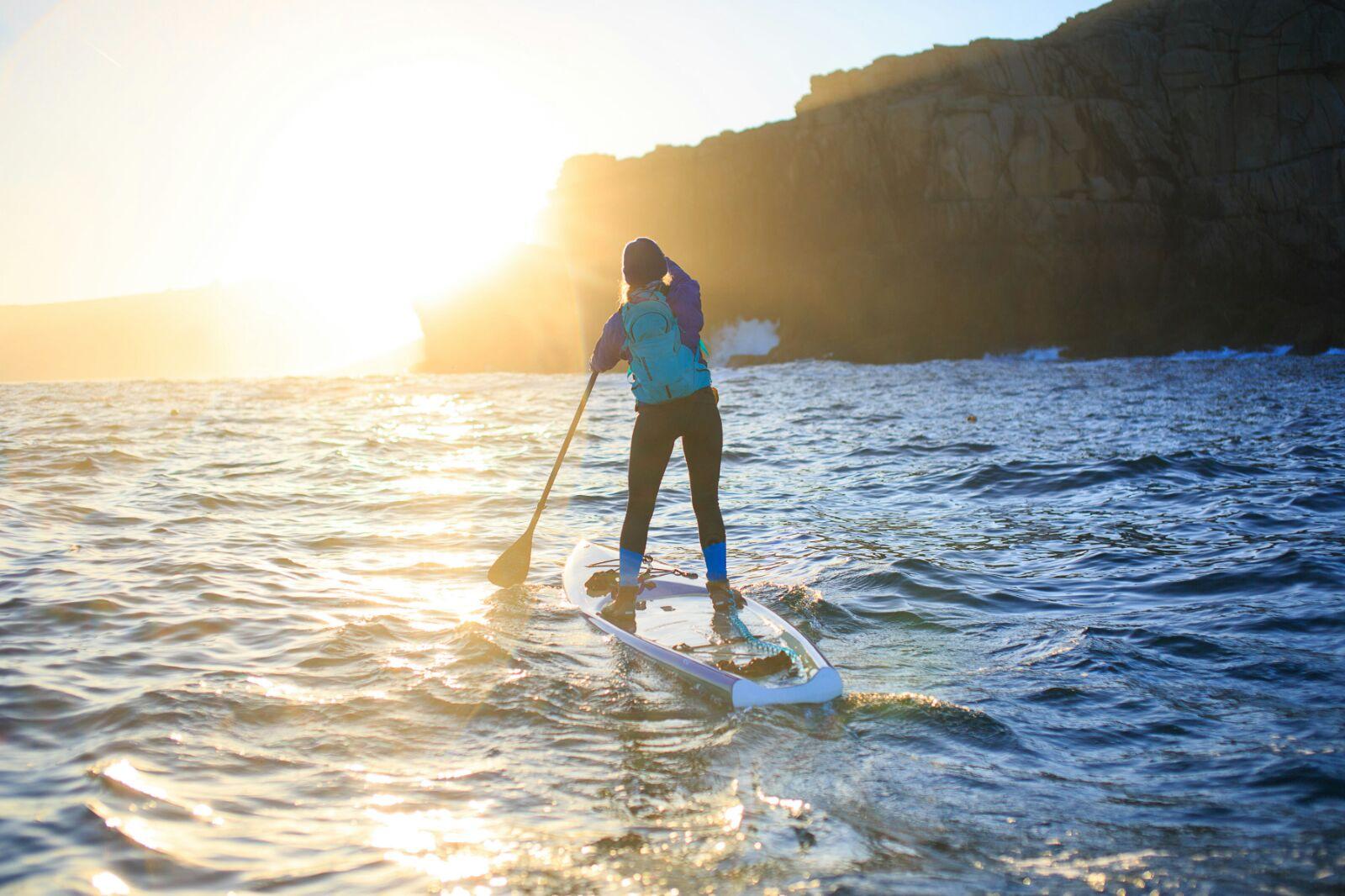
5
Check multiple weather forecasts
Find a forecasting site you trust. My favourite app for wind and weather forecasting is called Windy – it gives a visualisation of what’s going on in your part of the world. It’s very detailed and I have found it to be really accurate, perhaps because you can pinpoint an area on the map rather than just searching for the nearest town.
6
Paddle with someone
It’s a good idea to paddle with someone, to help give you confidence, and so you can look out for each other. This could be a SUP club if you don’t know so many people who paddle. It’s all well and good putting yourself into challenging situations to test your decision-making ability and strength, but that should never come at the expense of your safety. If you are paddling alone, tell someone where you’re going and when you’re likely to be back.

7
Get local knowledge
If you’re planning to paddle somewhere new, don’t be afraid to ask for help from someone who knows the area better than you, whether that’s a SUP club, fisherman or the local RNLI. If you’re paddling out of a beach that’s patrolled by the RNLI, go and have a chat with them and let them know what you’re up to, they’ll be really grateful that you did, and I find they’re normally full of wisdom and support. Big up the RNLI.
8
Call the coastguard
If you’re going any further than just off the beach, call the coastguard and let them know your plans before you set off. First they’ll ask you to check in when you get back on land, and if you don’t they’ll call you to make sure things are okay. It might be the first indication to look for you if something’s gone wrong. Second, in my experience, the well-meaning public regularly call the coastguard if they see a lone paddleboarder out to sea! If the coastguard knows you’re there on purpose then they’ll be less likely to waste resources going to see what is going on, and can call you or radio you instead to make sure you’re okay.
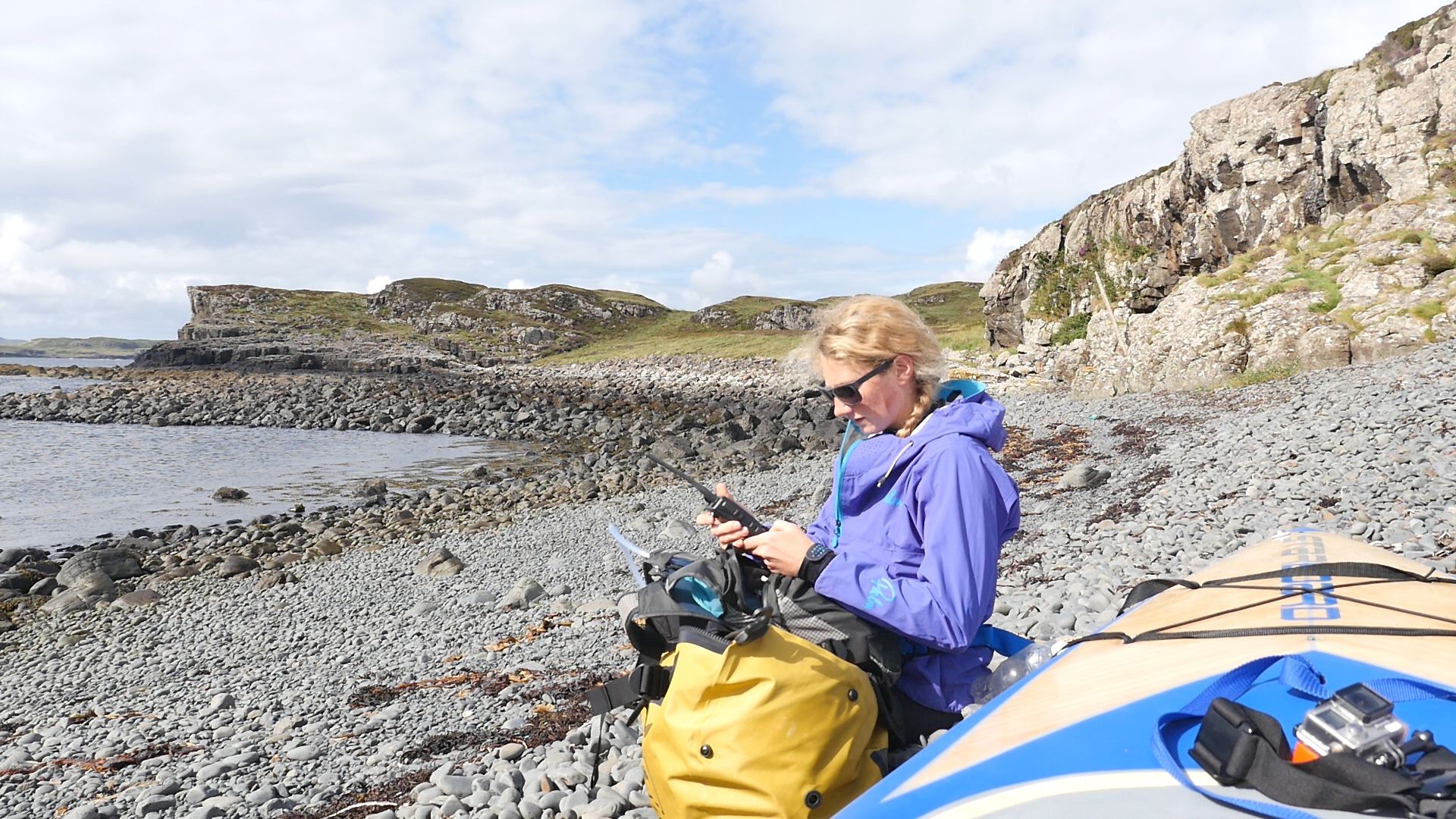
9
Beware of dehydration and the bonk
Take water and food with you if you’re out for more than the shortest of paddles. Dehydration comes on quickly, and can impair your judgement and ability to paddle. Wearing a hat and sunscreen if it’s sunny is also just sensible. I always carry food with me if I’m paddling now too since I ‘bonked’ one day out at sea, without enough calories to sustain me. It was pretty scary feeling so weak, and pretty dangerous too! I now make sure I eat at least every hour to avoid it, as once you’ve bonked, it’s going to take a wee while to recover!
X
When faced with a decision, choose the wise one
Don’t push your luck – if you’re cutting it fine with the tide, turn back; if the winds are due to change at midday, don’t push it until 11:59. Always make the safe decision, because the ocean is unpredictable, even with the best forecasting techniques. Remember number one – respect the ocean.
I don’t mean to scare you or suck the fun out of paddling! But take it from me, it’s so much more enjoyable when you can remove some of the anxiety around the unknowns, and know you’ve acted as responsibly as possible.
